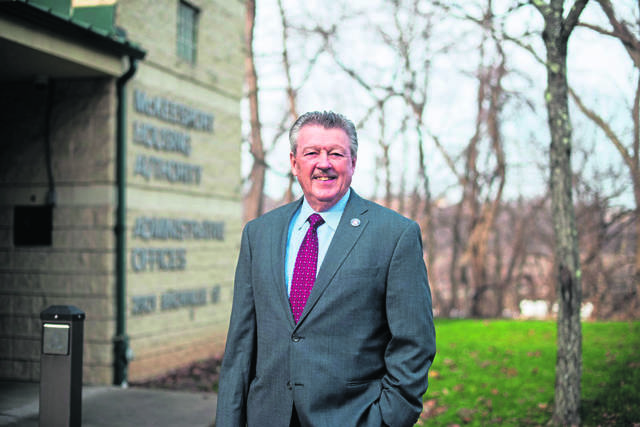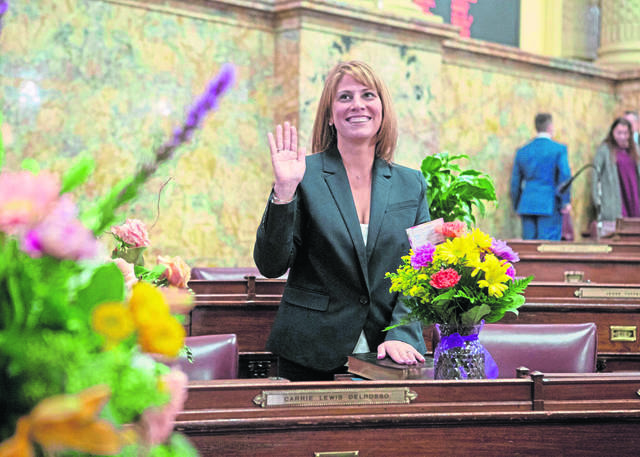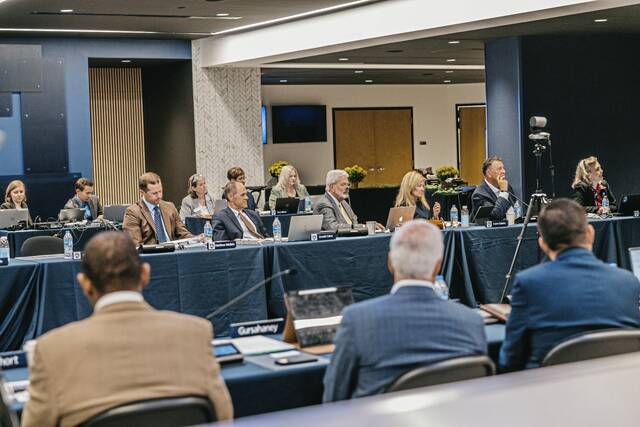Jim Brewster, the McKeesport Democrat, has vivid memories of going to bed in December 2011 in his Allegheny County home and waking up to find his 45th Senate District had been moved across Pennsylvania to the Poconos.
Strange things can happen when politics collides with the need to resketch district lines after each census.
Brewster took his case to the courts, and the Pennsylvania Supreme Court sided with him. Eventually, lawmakers overseeing legislative reapportionment opted to change the outline of Brewster’s district — which runs from the Mon Valley through New Kensington and Arnold — to hew to the one man, one vote standard and eliminate an Allegheny County Senate district whose lawmaker had been convicted of public corruption.
“For those who don’t understand, the 45th District probably would have been divided among three other senators,” Brewster said. “And we’d have lost the millions of dollars I’ve been able to bring in.”
Karen Calhoun, who heads Fair District PA’s efforts in Somerset and Westmoreland counties, said Brewster is one of only two lawmakers in the two counties who have signed on to sponsor bills that would require that the secretive processes that governs legislative reapportionment and congressional redistricting be opened to the public. Freshman state Rep. Carrie Lewis Del Rosso, R-Oakmont, is the other.
Del Rosso won a hard-fought election last year to unseat then House Minority Leader Frank Dermody. She represents a district that winds through the Allegheny Valley and includes New Kensington and Arnold as well as a swath of Allegheny County from Indiana Township through Harrison.
She said her election proves voters will support a candidate, not just a party. Nonetheless, she’d like to see more transparency in the way lawmakers redraw the lines.
Raising awareness
Traditionally, the party in power has used its clout to draw new districts that favor its incumbents. In many areas, they have been so skewed by partisan gerrymandering that incumbents are elected again and again with little or no opposition.
The Brennan Center labeled Pennsylvania among the most gerrymandered states in the nation.
Fair Districts PA, an effort to confront and eliminate gerrymandering, was born out of the League of Women Voters of Pennsylvania in 2016, as the league fought a prolonged but ultimately successful battle to overturn the state’s 2011 congressional district maps.
“Fair Districts PA is nonpartisan,” Calhoun said. “We don’t want the Democrats to do it, and we don’t want the Republicans to do it. We want (the remapping process) to be done in a way that maximizes the power of the vote in the people’s hands.”
Jeanne Smith, a retired Hempfield educator who is working with Calhoun, said the group hopes making people aware of how the process works and how it could be changed may make a difference.
“Making it known that this is going on and what it is about and what the bills have in them is important for us,” Smith said.
At one time, the process took days as lawmakers redrew districts by hand. Now, free online mapping software and publicly available census data makes it easy for anyone to redraw those maps based on whatever criteria they set.
Calhoun said her group has reached out to every member of the local delegation. She hopes more lawmakers will sign onto bills pending in the state House and Senate. The bills, dubbed LACRA for the Legislative and Congressional Redistricting Act, would govern both congressional redistricting and legislative reapportionment.
Stagnant population growth will cost Pennsylvania a congressional seat, going from 18 to 17 districts in 2022. And population losses in the west mean legislative districts likely will shift toward growth in the east. That means both processes need the reforms outlined in the bills, Calhoun said.
“The purpose is to create transparency and make the process open to public engagement and establish criteria in keeping with the Pennsylvania Constitution, to keep districts compact, contiguous and not divide counties and municipalities unless necessary. Those were violated in 2011,” Calhoun said.
‘Walking into a hurricane’
There’s a history of that kind of thing in Western Pennsylvania.
The former 7th Congressional District in Eastern Pennsylvania, created by the 2011 congressional redistricting process, wound about the region in such a convoluted fashion that it was frequently pointed to as the most gerrymandered in the nation. It even was referred to as an outline of Donald Duck kicking Goofy in the butt.
Further back, in 1992, the creation of new congressional districts split the village of Crabtree in central Westmoreland County into three congressional districts.
“Across the state, local groups are trying to meet with every single legislator in Pennsylvania,” Calhoun said. “We’ve scheduled meetings with 200 legislators. So far, about 190 have happened and we have a handful to go. … We’re working on meeting with Pat Stefano and Kim Ward.”
Fully 25 senators, or half of the state Senate, have signed on as co-sponsors of the bill. But a major coup would be snagging support from Stefano, a Republican from Fayette County who sits on the State Government Committee, and Ward, a Hempfield resident who is Senate majority leader and a part of the five-member Legislative Reapportionment Commission that will draw the maps.
Ward is open to public input, but she remains non-committal about the bill.
“The redistricting commission will be holding public meetings/hearings this summer on issues surrounding redistricting,” she said in a text to the Tribune-Review. “We appreciated Fair Districts taking part in the state government hearings on redistricting last month.”
David Thornburgh, the son of the late Gov. Dick Thornburgh, is CEO of the Committee of Seventy, a Philadelphia-based good government group. He has been touring the state, lobbying for reforms to the reapportionment/redistricting process and promoting a series of mapping contests through Draw the Lines PA.
Over the last three years, Draw the Lines competitions across the state have resulted in 1,300 citizen-drawn congressional and legislative maps.
Still, Thornburgh is not surprised some lawmakers are hesitant to adopt a bill that would force them to cede some of their power over the process. Finding common ground among elected officials set on protecting their turf is tough.
Indeed, the members of the Pennsylvania Legislative Reapportionment Commission — Ward and Senate Minority Leader Jay Costa, D-Forest Hills, House Majority Leader Kerry Benninghoff, R-Centre/Mifflin, and House Minority Leader Joanna McClinton, D-Philadelphia — could not even agree on a fifth lay member, who would be a potentially tie-breaking vote, to chair the commission.
As it has repeatedly in the past, the state Supreme Court was forced to step in to end the stalemate. In May, the court named retired University of Pittsburgh Chancellor and law professor Mark Nordenberg to chair the commission.
The selection of the even-tempered academic who spent nearly two decades establishing Pitt’s reputation as one of the nation’s top research universities was applauded across the state.
And, while Thornburgh is optimistic about prospects for more balanced plans this year with control of the legislature and the governor’s office split between the two parties, he is concerned the prospects for bills to codify reform criteria aren’t great.
“The odds have never been high. It’s tough to push changes in the legislature that affect the nature of the electoral process with those folks,” he said. “Given that we don’t have an initiative process in Pennsylvania, you have to go through statute and you’re doing something to the process by which those folks get elected.
”So, you know you’re walking into a hurricane, you’re walking into a 120 mph wind.”













